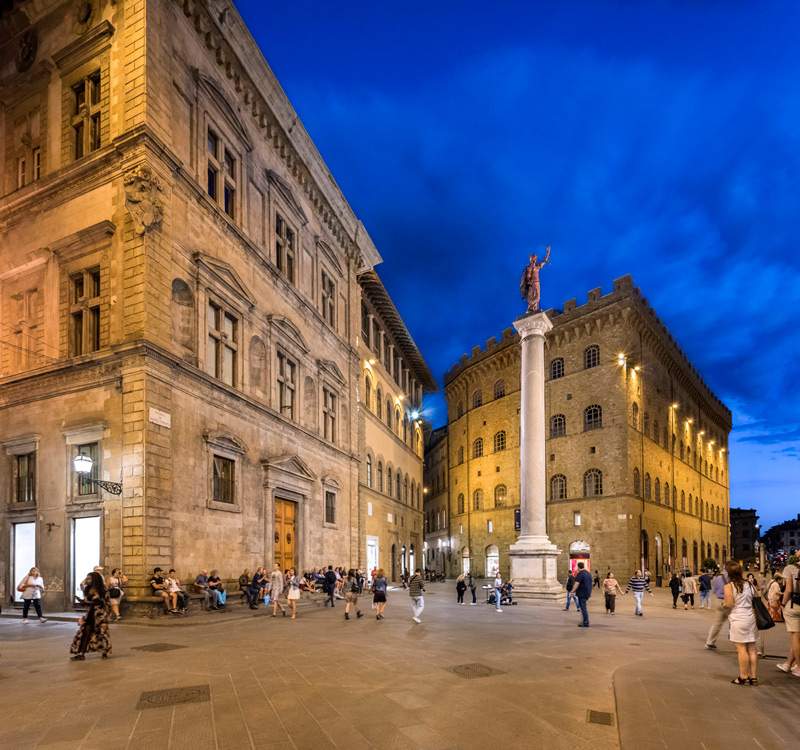As of May 26, the Casamonti Collection, set up in Florence on the piano nobile of the historic Palazzo Bartolini Salimbeni, gets a makeover: as already announced last year, when collector Roberto Casamonti had opened to the public his own collection gathered over forty years of work and research, comes the planned renovation that opens the doors of the second half of the twentieth century to visitors. So if in the first year of opening Casamonti had shown works from the first half of the century, now come works from the 1960s to the early 2000s.
The artists are presented by movements: starting withArte Povera from Giuseppe Penone, Mario Ceroli, Gilberto Zorio, Mario Merz, Michelangelo Pistoletto, Jannis Kounellis, Piero Gilardi, Alighiero Boetti, Pier Paolo Calzolari to Pino Pascali. While Biasi, Colombo and Bury, bear witness toKinetic or ProgrammedArt. Vincenzo Agnetti and Giulio Paolini,Conceptual Art. For Nouveau Réalisme the choice fell on Cesar, Arman, Daniel Spoerri, Yves Klein, Raymond Hains, Christo, while Nam June Paik and Chiari testify to the Fluxus movement. Then the so-called School of Piazza del Popolo with Mario Schifano, Franco Angeli, Tano Festa, Cesare Tacchi, Renato Mambor and Sergio Lombardo; Land Art with Richard Long and Christo; New Dada with Robert Rauschenberg and Jim Dine. Gilbert&George, Ontani, Marina Abramović, Vanessa Beecroft interpret Body Art, works flanked by Bill Viola’s video; while in reference to Pop and Graffiti Art there are Andy Warhol, Keith Haring and Jean-Michel Basquiat. The Transavanguardia movement is documented by Paladino, Clemente, De Maria and Chia. Then there are other great interpreters of the second half of the 20th century: Fausto Melotti, Arnaldo Pomodoro, Gino De Dominicis, Tancredi Parmiggiani, Maurizio Cattelan, and Emilio Isgrò. International art greats include works by: Joan Miró, Antoni Tàpies, Günther Uecker, Anselm Kiefer, Anish Kapoor, Tony Cragg.
Roberto Casamonti, in proposing this his second window on art, as was the case with the first part, did not set himself a museum-like goal of precise and complete art-historical documentation, an otherwise impossible goal. He has chosen, selected, singled out, artists and works of his personal interest. And to be proposed here is a sort of history of art of the second half of the twentieth century “according to Casamonti,” in which the collector recounts his personal tastes and values: thus, in the narrative of half a century of art, the collection leads the public back to visions and passions, stories and friendships that have traced the long history of the art dealer and collector. Roberto Casamonti’s hope is that the success achieved with the first part of the Collection-focused on the evolutionary line of the twentieth century from figurative to abstract language-may continue for this second section, in which the profound changes in contemporary art and its conceptual outcomes are analyzed.
The Casamonti Collection opens Wednesday through Sunday from 11:30 a.m. to 7 p.m. For information you can call 055 602030, email prenotazioni@collezionerobertocasamonti.com or info@collezionerobertocasamonti.com, or visit www.collezionerobertocasamonti.com.
Pictured: Palazzo Bartolini Salimbeni, home of the Casamonti Collection.
 |
| Florence, the Casamonti Collection opens its doors to the second twentieth century: from the 1960s to the early twenty-first century |
Warning: the translation into English of the original Italian article was created using automatic tools. We undertake to review all articles, but we do not guarantee the total absence of inaccuracies in the translation due to the program. You can find the original by clicking on the ITA button. If you find any mistake,please contact us.